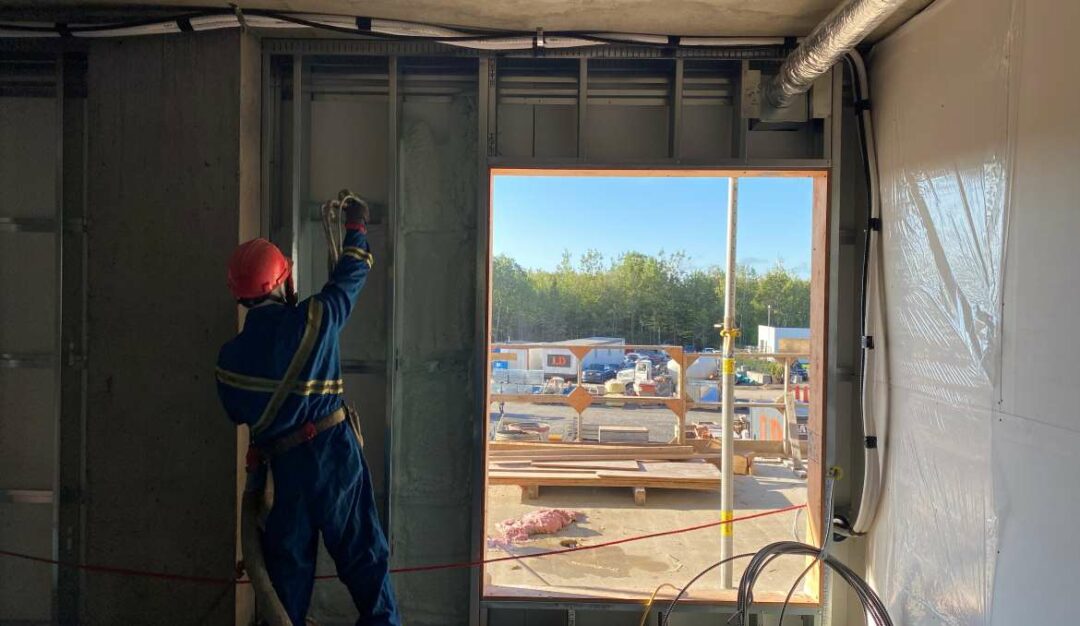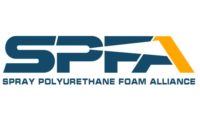New Generation Spray Foam Reducing Climate Impacts

Closed cell HFO-based spray foam applied in commercial buildings as continuous insulation. All images courtesy of Huntsman Building Solutions.

HFO spray foam applied in residential structures from the interior


The Spray Polyurethane Foam insulation and roofing industry is currently undergoing an important step in the evolution of its materials technology—a progressive phase-out of the use of Hydrofluorocarbons-, or HFC-based, systems and adoption of Hydrofluoroolefins-, or HFO-based, spray foams. The shift is a change in blowing agents and represents a move toward innovative, fourth generation spray foam systems. The significance cannot be overstated as HFO blowing agents, which are comprised of unsaturated organic compounds of hydrogen, fluorine and carbon, are an environmentally friendly technology. In a nutshell, HFO-based spray foams offer zero ozone depleting (ODP) potential and move the global warming potential (GWP) of spray foams from a factor of more than 794 to, in some cases, just 1.1
Notably, HFC and HFO blowing agents are third and fourth generation spray foam technologies, respectively, which followed the use of Chlorofluorocarbons-, or CFC-based spray foam systems (first generation technology used between the 1950s and 1980s), and Hydrochlorofluorocarbons-, or HCFC-based spray foams (second generation technology used in the 1980s and 1990s). Generally speaking, the progression of blowing agent technologies represents an ongoing movement toward options that have each been successively better for the Earth. The latest push toward HFO technology is supported strongly by the spray foam industry and its manufacturers, but it began with international and national regulation, and now continues on a state-by-state basis.
Regulatory Milestones
In 1987, the Montreal Protocol was signed as a first step by the international community to protect stratospheric ozone, mandating developed countries in 1993 begin phasing out CFCs, which are known to destroy the Earth’s ozone. The agreement aimed for participating countries to achieve a 50 percent reduction in CFC use relative to 1986 levels by 1998. After the agreement was signed, later data unfortunately indicated worse than expected ozone damage and led to a series of amendments: the London (1990), Copenhagen (1992), Montreal (1997), Beijing (1999) and Kigali (2016) Amendments—all aimed at controlling additional ozone-depleting chemicals and enforcing the compliance of developing countries.2
Supported at the time by the Obama administration, the Kigali Amendment aimed to phase down the production and consumption of HFCs because they result in potent greenhouse gases detrimental to the Earth’s climate. However, U.S. support for the Montreal Protocol stalled under the Trump administration, which removed the U.S. from the Paris Climate Agreement, blocking HFC phasedown efforts. Then, U.S. support shifted again in January 2021 when President Biden returned the country to the Paris Agreement to curb greenhouse gases and climate change. However, EPA SNAP program Rules 20 and 21, which list specific HFCs as unacceptable and call for the shift to environmentally friendly blowing agents, were partially vacated. The back-and-forth phasedown effort at the national level ultimately led a group of states to begin their own phasedown efforts.
Today, participating states are in various degrees of HFC phasedown. In addition to enacting legislation prohibiting certain HFCs, California and Washington have established stricter regulations aimed at curbing HFC emissions beyond EPA SNAP Rules 20 and 21. Additionally, Colorado, New York, Maine, Vermont, New Jersey, Delaware, Rhode Island, Maryland and Massachusetts have enacted legislation prohibiting certain HFCs in alignment with the federal SNAP 20 and 21 rules. Pennsylvania, Connecticut, Oregon, New Mexico and Hawaii have expressed intentions to introduce legislation to reduce HFC emissions, but no bills have yet been signed into law. Finally, Nevada, Minnesota, Wisconsin, Michigan, Illinois, Louisiana and North Carolina have not yet committed to regulating HFCs. However, like the others listed, these states are part of the U.S. Climate Alliance, a coalition of states committed to upholding the Paris Climate Agreement’s goal of keeping temperature increases below 1.5 Celsius (34.7 Fahrenheit) and thus may begin their own phasedown process in the future.
Effects on the Construction Industry
In addition to protecting the Earth, performance and installation improvements are pertinent in the shift to HFO-based blowing agents and spray foam systems. Contractors are increasingly accepting of HFO systems because they deliver improved yield and coverage. High-performance HFO spray foams are user-friendly, offering easier application and consistent quality on a day-to-day and batch-to-batch basis. While the base chemicals of HFO spray foam systems are more expensive than older generation systems by comparison, the improved yield provided by HFO spray foams, in addition to the higher R-value they achieve, ultimately equates to less product needed during installation. In turn, this represents a lower, or comparable, cost to older systems and, ultimately, more bang for the buck.
Industry participants, whether architects, builders or contractors, should expect the push toward HFO-based spray foams to continue. With contractors gaining a better understanding of the performance benefits of HFO over HFC spray foams, demand is expected to grow. Additional states are also likely to follow the first eleven in mandating the move, eventually leading to building code changes that favor HFO use. Finally, with the current administration highly focused on curbing climate change, federal regulations will likely follow, forcing the shift to occur more quickly.
References
- Environmental Protection Agency (EPA), Transitioning to Low-GWP Alternatives in Building/Construction Foams, www.epa.gov/sites/default/files/2015-07/documents/transitioning_to_low-gwp_alternatives_in_building_and_construction_foams.pdf
- Environmental Protection Agency, International Treaties and Cooperation about the Protection of the Stratospheric Ozone Layer, https://www.epa.gov/ozone-layer-protection/international-treaties-and-cooperation-about-protection-stratospheric-ozone
Looking for a reprint of this article?
From high-res PDFs to custom plaques, order your copy today!









